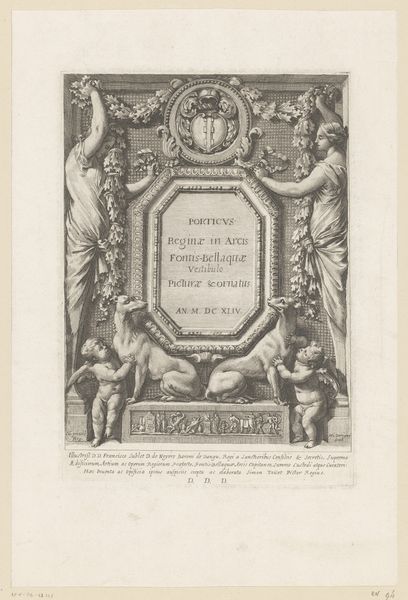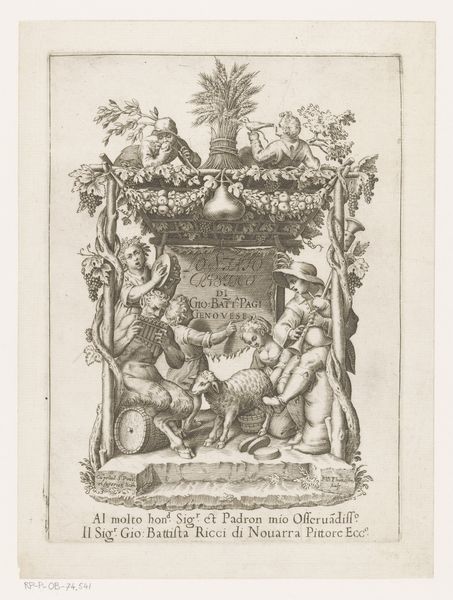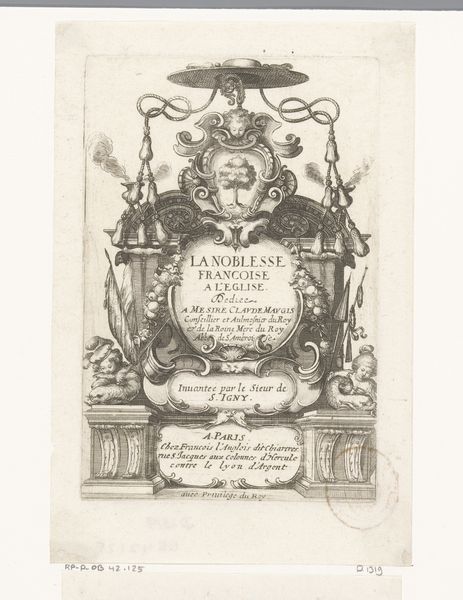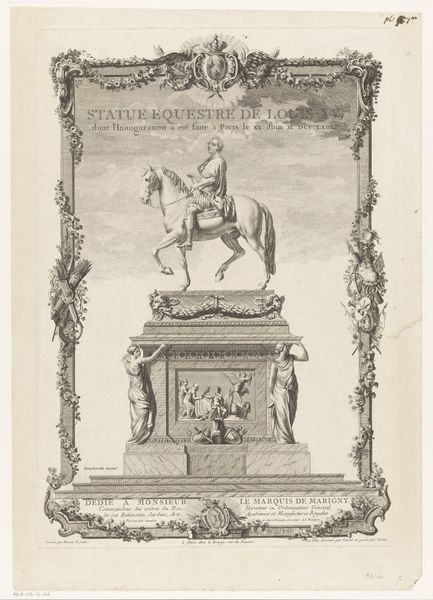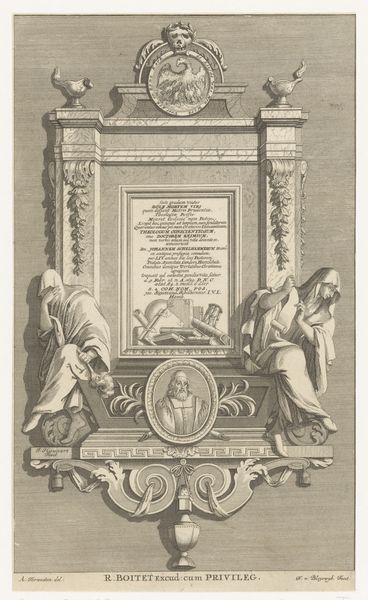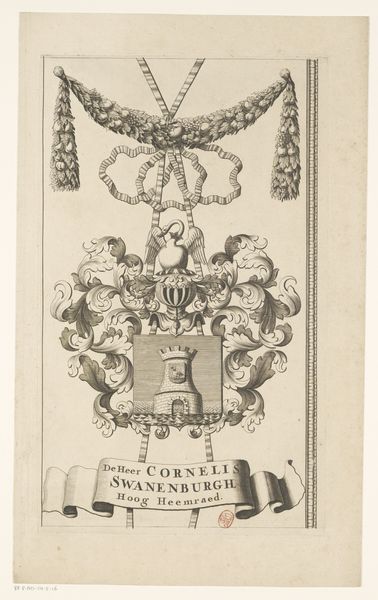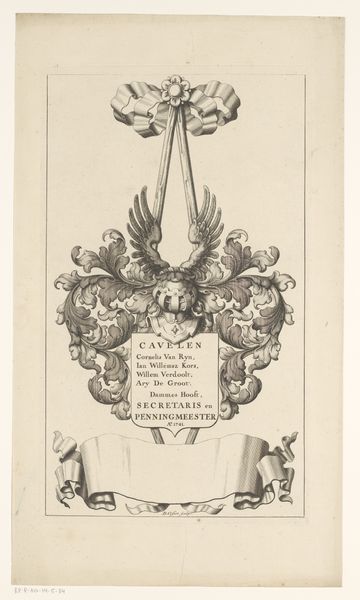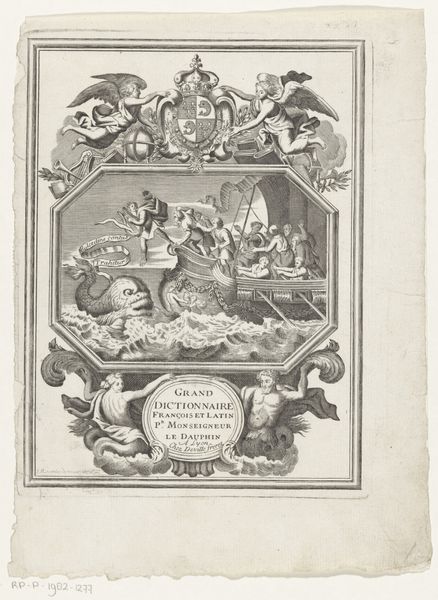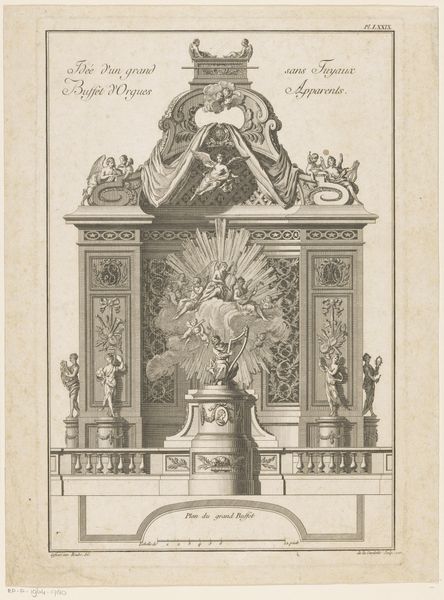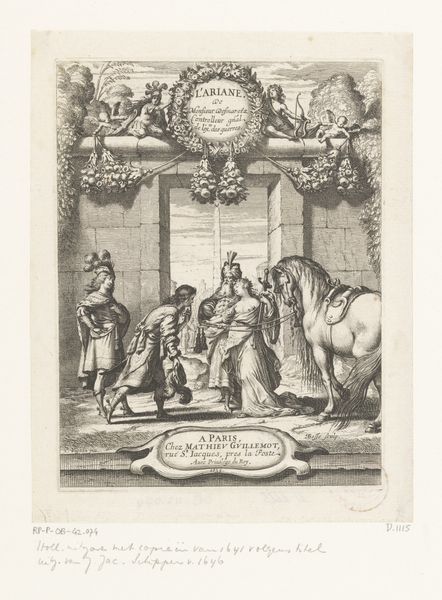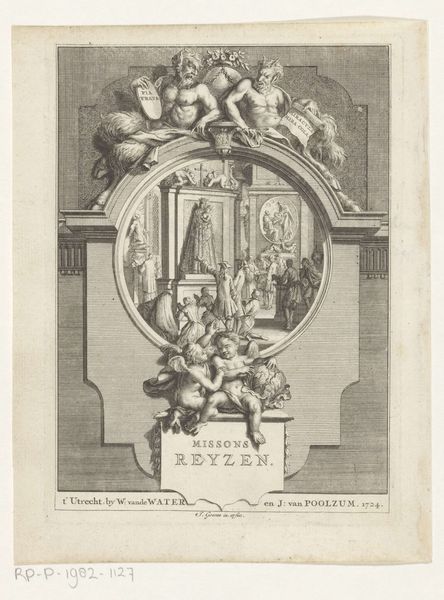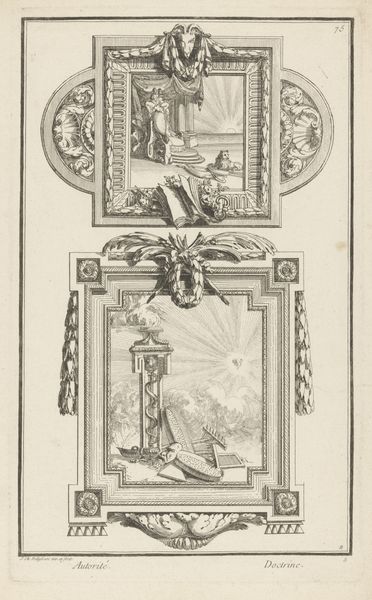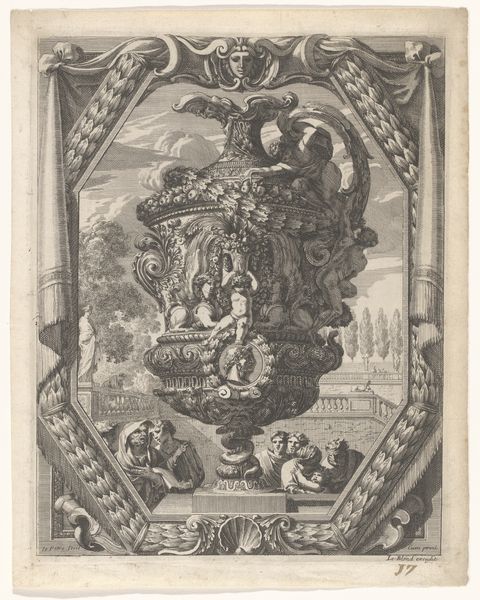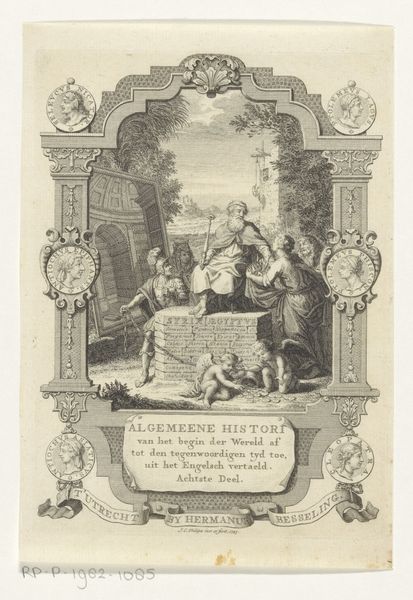
Klassiek altaar met griffioenen, een guirlande en de attributen van verschillende klassieke goden 1600 - 1641
0:00
0:00
graphic-art, print, metal, engraving
#
graphic-art
#
baroque
# print
#
metal
#
old engraving style
#
history-painting
#
engraving
Dimensions: height 280 mm, width 180 mm
Copyright: Rijks Museum: Open Domain
Editor: So this engraving from between 1600 and 1641 by Michel Lasne, "Classical altar with griffins, a garland, and the attributes of various classical gods," presents such an ornate and somewhat imposing display. I’m really drawn to how it blends these classical symbols, but I'm not entirely sure what it's all trying to convey. How do you interpret this work? Curator: What stands out to me is how Lasne employs classical imagery – the griffins, the altar, the attributes of gods – not merely as aesthetic decoration, but as a form of historical and cultural commentary. Consider the context: 17th-century Europe was grappling with rediscovering and reinterpreting classical antiquity. What stories do you think these symbols might be telling? Editor: I see your point. It’s almost like they're trying to reconstruct a past world or use it to legitimize their present. Curator: Precisely! This is more than just an image; it's an assertion of power and knowledge. The choice of mythological creatures like griffins and classical gods are linked with elite knowledge. Notice how they frame and legitimize the bookplate text; what message does it give to the viewer? Editor: So the "Classical altar" becomes a way of framing and elevating certain kinds of knowledge or power structures in that era. Now that you mention that, the placement and declaration that are being made makes total sense! Curator: Exactly. These visual cues invite a critical examination of how historical narratives are constructed and what values they perpetuate. We see here not just a depiction, but the construction of a worldview rooted in a very specific social and intellectual context. What do you take away from this? Editor: It’s clear how art like this operated within very defined social and cultural boundaries, solidifying established beliefs. Curator: Absolutely. This print then functions not just as art but also as cultural propaganda, if you will, subtly reinforcing existing power dynamics and structures.
Comments
No comments
Be the first to comment and join the conversation on the ultimate creative platform.
